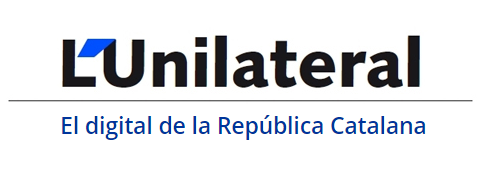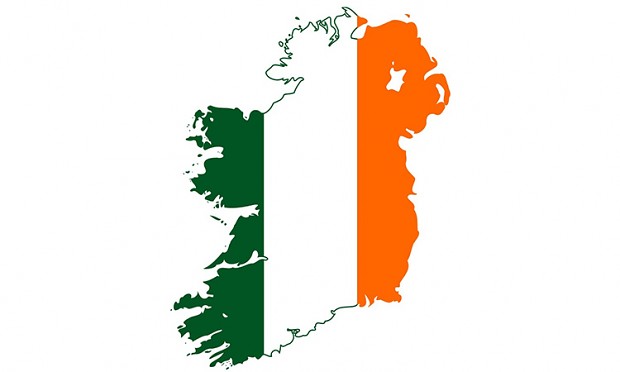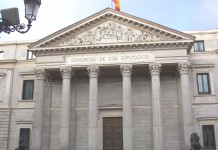The partition of Ireland into Northern Ireland and the Irish Free State, later Republic of Ireland, dates from May 1921, following the War of Independence of 1919-21. It was imposed on Ireland by the British imperial state with the aid of the most conservative wing of Irish nationalism, led by Arthur Griffiths and Michael Collins. Its purpose was to retain British control of the most industrialised and lucrative region of Ireland, the six counties around Belfast with its linen industry and shipbuilding.
Securing Irish acquiescence in partition and the ‘peace’ treaty with Britain required a bloody and brutal civil war in which Britain supported and armed the pro-Treaty forces led by Michael Collins against the anti-Treaty Sinn Fein/IRA led by Eamon de Valera. The war ended in 1923 in military victory for the pro-Treaty side but there was much sympathy for the anti-Treaty forces whose leader, de Valera, later became the founder the Fianna Fail party and Taoiseach (Prime Minister) and then President of the Republic.
Partition has cast a long shadow over Irish history. In 1914, when the idea was first being canvassed, James Connolly forecast that it would produce ‘a carnival of reaction’ on both sides of the border. He believed that it would split the labour movement which he saw as the main force for Irish freedom while allowing Bourgeois and conservative forces, both North and South, to use sectarianism to reinforce their positions. This proved an extraordinarily accurate prediction. What emerged were two reactionary states: the Orange state in the North founded on anti-catholic and and anti-republican bigotry and repression; the deeply conservative Catholic state in the State dominated economically by capital and ideologically by the Catholic hierarchy.
Despite various marginal IRA campaigns and other upheavals this state of affairs remained fairly stable until the emergence in the sixties of the Civil Rights Movement in the North. Beginning with agitation over housing discrimination and electoral gerrymandering, the Civil Rights Movement, inspired by its US counterpart, developed into a mass movement the Orange state was unable to tolerate. Instead it responded, especially on 5 October 1968, with legal bans and brutal police repression by the notorious RUC (Royal Ulster Constabulary) and the totally sectarian B-Specials. When this met with further resistance the British Army was sent in to maintain order and this, in turn, especially after the Bloody Sunday massacre in Derry in January 1972, escalated into major armed conflict, the War in the North.
This war, ‘The Troubles’ as it was known, constituted a serious challenge to partition but not one that in itself could succeed. So long as the Protestant working class in the North remained largely wedded to Unionism (and it did) and the Southern working class remained mainly passive (as it did) the minority nationalist community in the North was not able, by its own efforts, to defeat British rule. The Good Friday Agreement of 1998 which brought the War to an end marked a partial acknowledgement of this fact by Sinn Fein. In accepting that the six counties could not be coerced into a United Ireland and that unity of the country had to be on the basis of consent by the majority in the North, Sinn Fein was effectively agreeing to park the question of partition not as a long term goal of course, but as an immediate aim.
However, a number of interrelated factors have combined to put ending partition back on the political agenda. One is the change in demographics: a mixture of emigration, immigration and a slightly higher Catholic birthrate is slowly but surely undermining the solid Unionist majority that was built into the Six Counties from its inception. Historically it used to be approximately 60% Protestant/Unionist against 40% Catholic/ Nationalist; according to the 2011 census 48% were from a Protestant background and 45% from a Catholic background. Another factor is the relative decline in the economic importance of the North for British capitalism. At the time of partition it was a major asset, now it is something of a liability. These social changes underpin the ongoing political crisis of Unionism which is divided and weakened. The North used to be close to being a one-party Unionist state; now the main unionist party, the DUP, is running neck and neck with Sinn Fein. Nor does unionism have anything like the street and workplace level mobilising power that it had in the late sixties and seventies.
Finally there is the immediate trigger of Brexit. The DUP (Democratic Unionist Party) which is the main representative of unionism, supported and continues to support Brexit as well as propping up Theresa May’s minority Tory Government in Westminster. But in the Brexit referendum the North voted Remain by a substantial majority – 56% to 44%. This has given Sinn Fein the opportunity to argue that Northern Ireland is being taken out of the EU against the wishes of the majority of its people and that the way to resolve this is to hold a Border Poll, i.e. a referendum on the continued existence of the Border.
This matter is further complicated by the fact that ALL the political parties in Ireland, north and south, (DUP, UUP, Sinn Fein, SDLP, Fine Gael, Fianna Fail, Labour, People Before Profit and so on) are opposed to the establishment of a ‘Hard Border’ with customs and checkpoints and so on. So too, they claim, are the British Government and the EU. But so far neither the British Government nor any one else has figured out how Northern Ireland (as part of the UK) can leave the EU while the Republic remains in the EU, without there being some kind of hard border. Again Sinn Fein, and others, look to a Border poll to resolve this problem, simply by detaching the Six Counties from Britain.
Having said all this, however, it should not be presumed either that a Border Poll is imminent or that winning it would be straightforward. Of the main players involved only Sinn Fein favours holding such a poll at the moment. The DUP and the Tory government are hard against and the Irish government is quietly not interested. Consequently, short term, it is highly unlikely. Moreover if the poll were held soon it is not likely that yes for ending partition would pass. Protestants would still be likely to vote en masse against and not all Catholics would vote yes.
However there is another way of posing the question of Irish unity which is a minority position at present but may have the potential to become a majority in the future. This is to talk in terms of ending partition not simply on the basis of asking the North to join the South as it stands or simply by asking people to vote for unity according to traditional Green versus Orange senses of national identity.
Over the last ten years, essentially since the crash of 2008, there has emerged in both North and South a left ward moving layer of working class people opposed to austerity and to neo liberalism and a radicalised secularised and intersectional younger generation for same-sex marriage (passed by referendum in the South but still illegal in the North) , for abortion rights (still prohibited both North and South), for gender equality and opposed to sexual harassment and rape culture, anti-racist , pro-Palestine, against climate chaos and ecologically conscious and so on. These people reject a society based on religious sectarianism in the North just as they reject a society dominated by the Catholic Church in the South.
In other words there is a developing potential for a radical challenge to both the rotten reactionary states that emerged from partition and the Civil War in 1921-23. If that materialises so that a vote to end partition becomes a vote for new and better Ireland both North And South then maybe there will be a real chance of cutting through the old separations, hatreds and divisions. It is not going to happen tomorrow but it may happen the day after tomorrow – especially if people start working for it.


















[…] To read the article in English […]